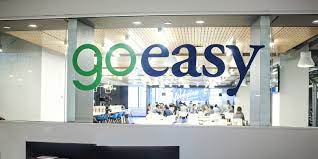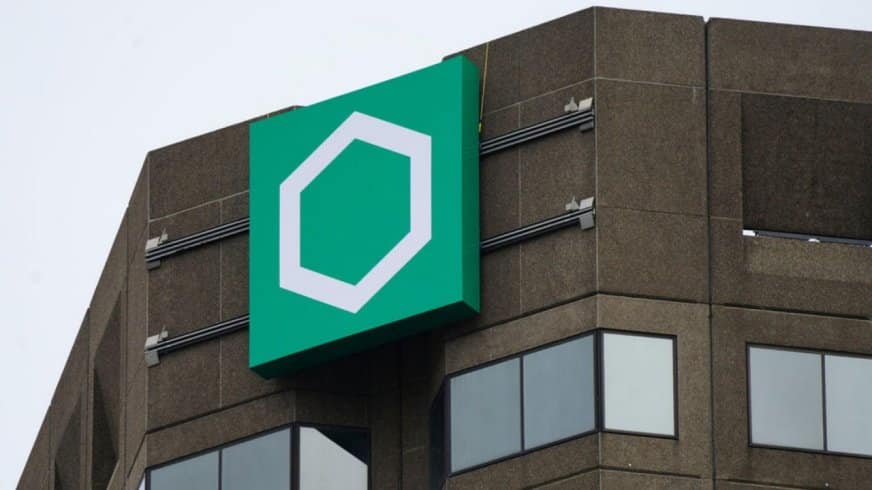GoEasy is my Top Pick for the next 12 months, this investor says

Canadian fintech company goeasy (goeasy Stock Quote Charts News Analysts Financials TSX:GSY) has gone nowhere but up over the past 12 months, but the ride ain’t done yet. That’s according to Jordan Zinberg of Bedford Park Capital who just named goeasy one of his Top Picks for the year ahead.
“Goeasy is a Canadian specialty lender,” says Zinberg, President and CEO at Bedford, who spoke on BNN Bloomberg on Monday. “They originate loans through over 400 physical locations, online and through various channel partners including point-of-sale.
“This loan book has grown from $30 million to $1.8 billion over the last ten years, and management came out with guidance towards a $3 billion loan receivable by 2023,” he said.
Leasing and lending business goeasy, with its brands easyhome, easyfinancial and LendCare, just reported a bang-up quarter earlier this month, showing a year-over-year revenue increase of 43 per cent to $165 million, with net income of $19.5 million compared to $32.5 million a year earlier. Goeasy’s EBITDA for the second quarter was $62.5 million compared to $65.0 million a year earlier.
Goeasy said the quarter saw increases in loan originations ($379 million, up 122 per cent from a year ago), strong results from credit performance as well as point-of-sale lending through recently acquired LendCare, which boosted consumer loans to a record $202 million for the quarter and led to the higher overall topline.
On the quarter, President and CEO Jason Mullins said, “As we have now entered a period of accelerated growth, revenues lifted 34 per cent, while adjusted diluted earnings per share rose 38 per cent. To support our future growth, we were also pleased to announce a $400 million increase to our securitization facility, supplemented by a material pricing reduction to a variable coupon rate of approximately 2.3 per cent.”
Goeasy, with a $3 billion market cap and supported by a dividend currently sitting at a 1.4 per cent yield, has seen its share price take off over the past 12 months. The stock has gone from about $60 per share to now $180, making for a clear triple in a one-year time span.
But there’s likely more where that came from, according to Zinberg.
“It’s not as cheap as it was maybe six or 12 months ago when you could have bought it in the COVID lows for four times earnings, believe it or not,” said Zinberg. “It’s trading right around 14 times this year and 12 times next year.”
“[Goeasy has] consistently high return on equity, an excellent management team, fantastic margins. I think you’re going to see nothing but sunny skies ahead for goeasy,” he said.
“I think this is the top financial stock to own in Canada — no disrespect to our phenomenal Canadian banks, but in addition to your banks, I think investors should take a look at goeasy because this stock is a very easy way in my view to make 20 per cent plus a year,” Zinberg said.
The addition of LendCare to goeasy’s stable has been a crucial development for the company, allowing goeasy to expand its product range and POS platform. Closed in April of this year, Mullins said the LendCare buy represents a major milestone in his company’s aim to be “the leading provider of non-prime consumer credit in Canada.”
“By widening our range of near-prime products and adding new industry verticals to our point-of-sale lending channel, we accelerate our growth and expand our addressable portion of the $200 billion non-prime consumer credit market,” said Mullins in a press release. “Of equal importance, it enables the organization to continue pursuing its strategy of helping everyday Canadians access credit, while gradually reducing their cost of borrowing and putting them on a path to a better financial future.”
Also with the second quarter results, goeasy announced an increase in its existing revolving credit facility to $600 million from its current $200 million capacity, underwritten by National Bank Financial through a new three-year agreement.
Management provided updated guidance, as well, calling for the company to hit full 2021 revenue growth of between 24 and 27 per cent, followed by 17 to 20 per cent in 2022 and 12 to 15 per cent in 2023. Adjusted Return on Equity is forecasted to be over 22 per cent for all three years, while the company’s gross loan receivable portfolio is expected to hit between $1.95 and $2.05 billion by the end of 2021, between $2.35 and $2.55 billion by the end of 2022 and between $2.8 and $3.0 billion by the end of 2023.
“With the economic recovery underway, the launch of our new auto loan product and the rapid expansion of our point-of-sale platform, we expect the growth of our portfolio to accelerate as we capture a larger share of the $200 billion non-prime consumer credit market,” said Mullins in the second quarter press release.



